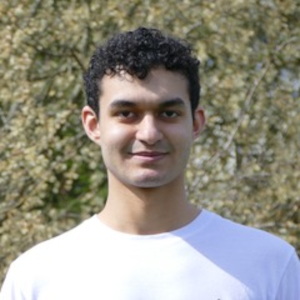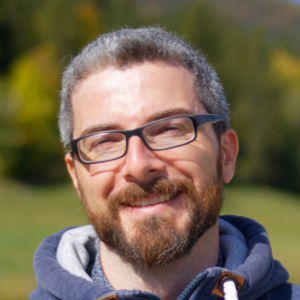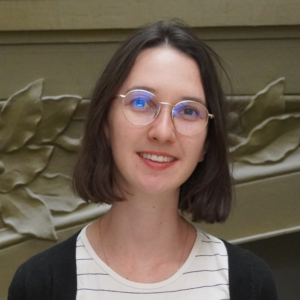Overview
Antiferromagnetic materials could represent the future of spintronics thanks to the interesting features they combine: they are robust against perturbation due to magnetic fields, produce no stray fields, display ultrafast dynamics and generate large magneto-transport effects. In this team, research efforts are being invested in unraveling spin-dependent transport specifities of antiferromagnets. For a review of the team latest achievements, please follow this talk.
Research topics
Spin and charge transport
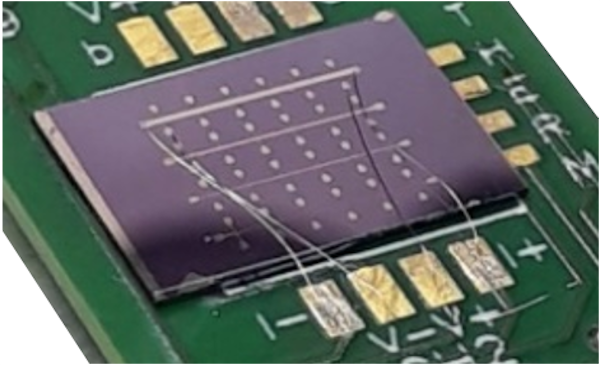
Whether spin and charge currents can be injected, transmitted and converted in antiferromagnetic materials, how subsequent variations can be detected, and what is the actual influence of the magnetic order vs. defects are some of the thrilling challenges being addressed, whether it be magnons, single electrons or Cooper pairs.
Nanomagnetism
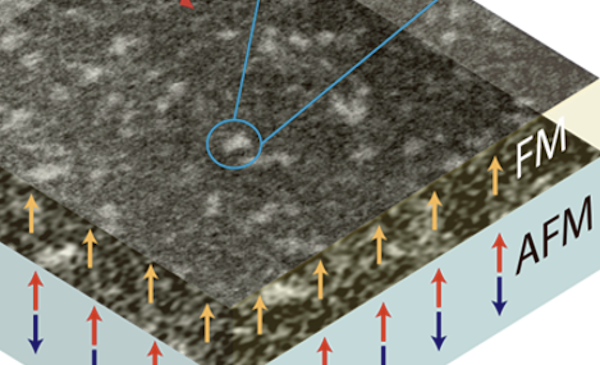
To what extent and how the magnetic properties of antiferromagnetic materials shall and can be adjusted for use as functional materials in spintronic applications are some of the questions addressed in this activity, whether it be interfacial spin structures or spin textures like skyrmions.
Sub-THz dynamics

How sub-THz dynamics of antiferromagnets can promote spin pumping, and with what efficiency with respect to the damping parameter and to the transfer of angular momentum from the antiferromagnet are some of the exciting challenges addressed in this activity.
The team
Former members
Post-docs
- Olga Gladii, 2017-2019, now Post-Doctoral research fellow at HZDR – Germany
- Guillaume Forestier, 2016-2018, now R&D Engineer at ST-Microelectronics – France
PhD
- Miina Leiviskä, 2020-2023, now Post-Doctoral fellow at FZU – CZ
- Floris van Duijn, 2020-
- Rafael Lopes Seeger, 2018-2021, now Post-Doctoral fellow at C2N – France
- Lamprini Frangou, 2014-2017, now RUser Researcher at Pictarine – France
- Pablo Merodio also theory group, 2011-2014, now Research Associate Professor at Universidad Politécnica de Madrid – Spain
- Kamil Akmaldinov, 2011-2015, now R&D Engineer at Crivasense technologies – France
Internships
- Laxman Nagi Reddy, 2020
- Rafael Lopes Seeger, 2018
- Jolan Barbançon, 2016
- Lamprini Frangou, 2014
- Nicolas Mante, 2011
- Safeer Chenattukuzhniyil aka. C. K. Safeer, 2011
- Marthe Chamfrault, 2010
Projects
- ALTEROSPIN, PEPR SPIN, 2025-2028
- SUPERSPIN, PEPR SPIN, 2025-2028
- HEXAS, ANR-DFG PRCI 2024-2027
- TOAST, PEPR SPIN, 2023-2028
- SUPERFAST, ANR PRC, 2022-2026
- MATHEEIAS, ANR-DFG PRCI, 2020-2024
- ASK, PHC France-UK, 2021-2022
- ELSA, CEA exploratoire bottom-up, 2018-2019
- CRG KAUST / SPINTEC / UTEXAS, 2016-2019
- ASTRONICS, ANR JCJC, 2015-2018
- CROCUS Technology, 2012-2015
Partners
- Laboratoire IRIG/SYMMES/RICC, S. Gambarelli, Grenoble, France
- Unité mixte CNRS/Thales, R. Lebrun, Paris, France
- Laboratoire national des champs magnétiques intenses LNCMI, Anne-Laure Barra, Grenoble, France
- Laboratoire IRAMIS/SPEC/LNMO, M. Viret, J. B. Moussy, Gif-sur-Yvette, France
- Laboratoire Charles Coulomb L2C, V. Jacques, Montpellier, France
- Centre interdisciplinaire de nanoscience de Marseille CINAM, L. Michez, A. Manchon, France
- TU Dresde / Uni. Constance, S. Goennenwein, H. Reichlova, Germany
- Johannes Gutenberg University JGU, L. Smejkal, J. Sinova, H. Gomonay, Mayence, Germany
- Fritz Haber Institute FHI, T. Kampfrath, Berlin, Germany
- The University of York, R. L. Evans, S. Jenkins, UK
- Catalan Institution for Research ICREA, J. Sort, Barcelona, Spain
- Laboratoire de physique des solides LPS, A. Mougin, Orsay, France
- Laboratoire d’optique et de magnétisme de Bretagne OPTIMAG, D. Spenato, Brest, France
- King Abdullah University of science and technology KAUST, A. Manchon, Thuwal, Saoudi Arabia
- Groupe de physique des matériaux GPM, L. Lechevallier and D. Ledue, Rouen, France
- CROCUS Technology, Grenoble, France
Recent news
- Penetration depth of Cooper pairs in antiferromagnets (October 11th, 2021)

Researchers at SPINTEC Grenoble, in collaboration with PHELIQS & CIME Grenoble and LOMA Bordeaux, demonstrated how the superconducting proximity effect can be used to evaluate the penetration of Cooper pairs in metallic antiferromagnets. These findings ... - Seminar – Functional topological antiferromagnet (September 30th, 2021)

On Thursday, October 7th at 15:30 YoshiChika Otani (*), from University of Tokyo will give us a seminar entitled: Functional topological antiferromagnet Place : CEA Bat. 10.05 Room 445 (limited to 30 persons having a CEA Badge) skype ... - Masters thesis projects for Spring 2022 (September 17th, 2021)

You find here the list of proposals for Master-2 internships to take place at Spintec during Spring 2022. In most cases, these internships are intended to be suitable for a longer-term PhD work. Interested Master-1 ... - Seminar – Magneto-thermo-transport phenomena in antiferromagnets with non-collinear spin structure (September 02nd, 2021)

On Friday, September 17th at 11:00, Eva Schmoranzerova, research scientist at Faculty of Mathematics and Physics, Charles University, Prague will give us a seminar entitled: Magneto-thermo-transport phenomena in antiferromagnets with non-collinear spin structure Place : CEA Bat. ... - [POSITION FILLED] Post-doctoral position – Experimental antiferromagnetic spintronics (May 25th, 2021)
![[POSITION FILLED] Post-doctoral position - Experimental antiferromagnetic spintronics](https://www.spintec.fr/wp-content/uploads/2021/05/Annonce-post-doc-AF-100x70.jpg)
Subject and context: The candidate will work in the frame of the MATHEEIAS project. MATTHEIAS stands for MAgneto-THermo-Electric Effects In Antiferromagnetic Spintronics. It is a collaborative international project co-funded by the French ANR and the German ...

